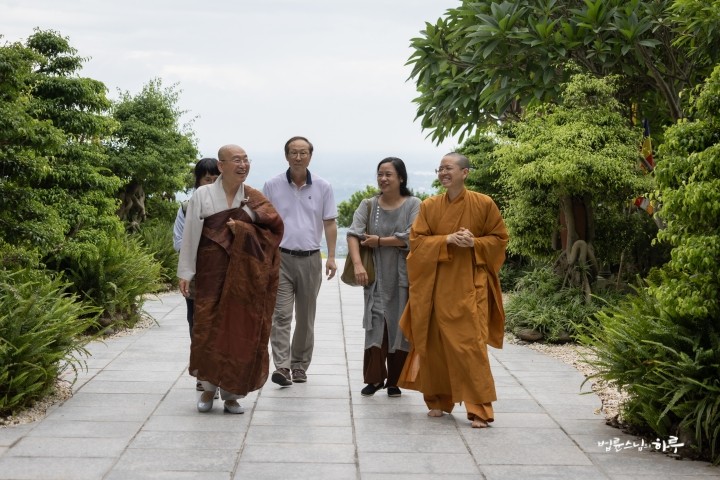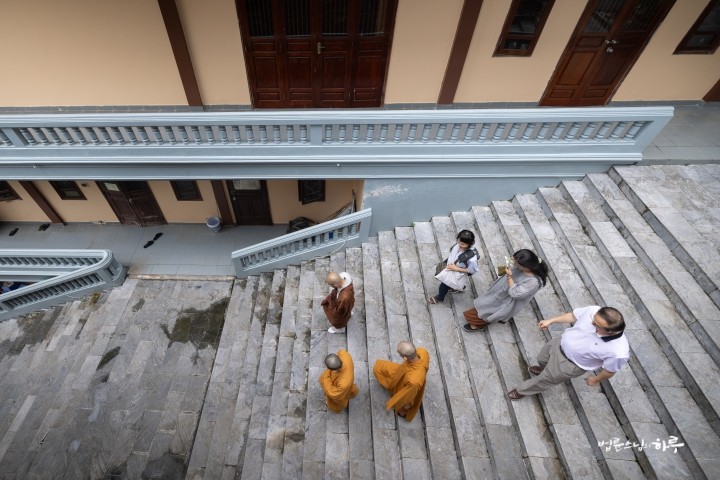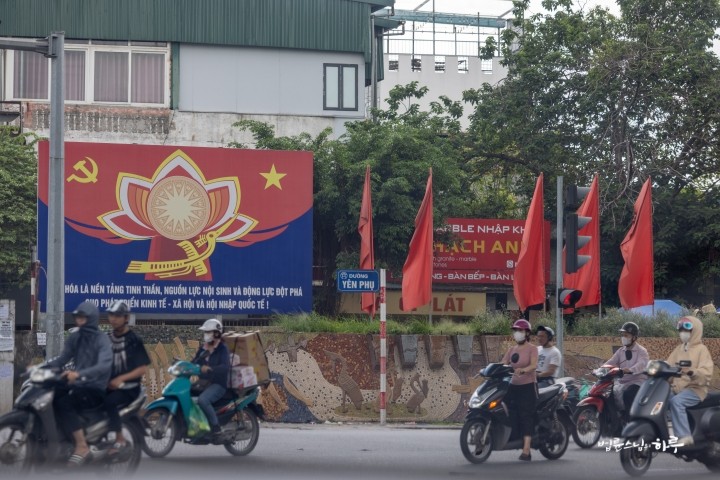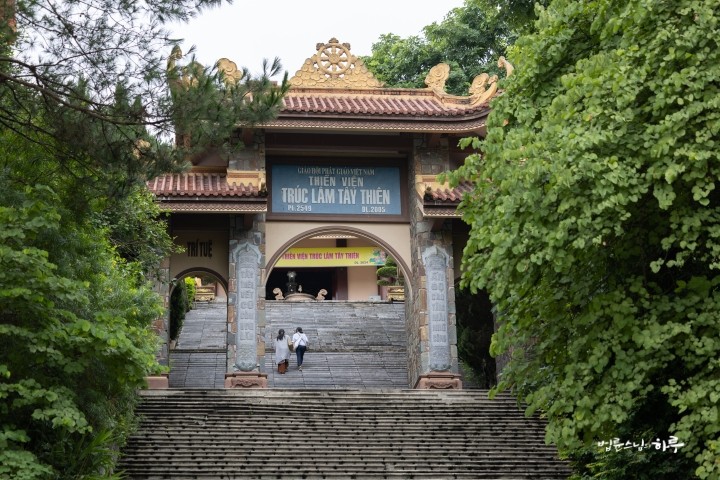Are you curious about the spiritual practices at Tay Thien Pagoda during your Vietnam travels? SIXT.VN is here to guide you through the unique cultural and religious experiences this sacred site offers. Discover more about the prayers, rituals, and spiritual significance of Tay Thien and how it enriches your visit to Vietnam. SIXT.VN provides reliable travel advice, ensuring a smooth and culturally immersive journey. Explore Vietnamese Buddhism and its practices.
1. What is Tay Thien?
Tay Thien is not only a place but also a spiritual symbol deeply embedded in Vietnamese Buddhist culture. Let’s delve into the history, origin, and significance of Tay Thien to better understand its religious importance and its profound impact on Vietnamese spirituality.
1.1. What is the History of Tay Thien?
Tay Thien, often referred to as Tay Thien Zen Monastery, boasts a rich history rooted in the early days of Vietnamese Buddhism. Established centuries ago, it is considered one of the oldest centers of Zen Buddhism in Vietnam. The monastery’s history is intertwined with the development of Buddhism in the region, marking it as a vital historical and religious site. According to historical records, Tay Thien dates back to the 3rd century AD, making it one of the earliest Buddhist centers in Vietnam. Over the centuries, it has been a hub for Buddhist scholars and practitioners, playing a significant role in the propagation of Buddhist teachings.
1.2. Where Does Tay Thien Originate From?
The origins of Tay Thien can be traced back to ancient Indian Buddhist traditions that spread to Vietnam through trade routes and missionary activities. As Buddhism took root in Vietnam, it blended with local beliefs and practices, giving rise to unique Zen traditions, with Tay Thien playing a central role. The name “Tay Thien” translates to “Western Paradise,” reflecting the influence of Pure Land Buddhism, which emphasizes the aspiration to be reborn in the Western Paradise of Amitabha Buddha. This syncretism of Zen and Pure Land elements is characteristic of Vietnamese Buddhism.
1.3. What is the Significance of Tay Thien?
Tay Thien holds immense significance as a cradle of Vietnamese Buddhism and a symbol of spiritual heritage. Its serene ambiance and historical importance make it a popular destination for pilgrims and tourists seeking to connect with Vietnam’s rich cultural and religious legacy.
- A Cradle of Vietnamese Buddhism: Tay Thien is revered as one of the earliest centers of Buddhism in Vietnam, contributing significantly to the religion’s development and spread.
- Spiritual Symbol: The monastery represents the blend of Zen and Pure Land Buddhist traditions, showcasing the unique character of Vietnamese Buddhism.
- Cultural Heritage: Its rich history and architectural beauty attract those eager to explore Vietnam’s religious and cultural heritage.
- Pilgrimage Site: Many Buddhists visit Tay Thien to pay homage, meditate, and seek spiritual guidance.
2. Are There Specific Prayers or Rituals Associated With Tay Thien?
Yes, Tay Thien Pagoda, as a significant center of Vietnamese Buddhism, has several specific prayers and rituals deeply rooted in its tradition. These practices not only reflect the spiritual values of the pagoda but also offer visitors a chance to participate in meaningful cultural experiences. Let’s explore some of these unique aspects.
2.1. What are the Daily Prayers at Tay Thien?
Daily prayers at Tay Thien form the backbone of monastic life and are open for visitors to observe. These prayers typically include chanting sutras, reciting mantras, and making offerings to the Buddhas and Bodhisattvas. The practice aims to cultivate mindfulness, compassion, and wisdom among the monks and devotees.
- Morning Chanting: Monks gather early in the morning to chant sutras, such as the Diamond Sutra and the Heart Sutra, which are central to Zen Buddhist teachings. This helps to purify the mind and set a positive tone for the day.
- Afternoon Recitations: In the afternoon, monks often engage in recitations of mantras and prayers dedicated to various Buddhas and Bodhisattvas, seeking their blessings and guidance.
- Evening Services: The evening service usually involves chanting and meditation, reflecting on the day’s activities and reaffirming their commitment to the Buddhist path.
2.2. What Rituals are Performed at Tay Thien?
Rituals at Tay Thien Pagoda are conducted to honor Buddhist deities, seek blessings, and commemorate important events. These rituals are often elaborate and involve specific procedures, offerings, and chants, creating a deeply spiritual atmosphere.
- Offering Ceremonies: Offering ceremonies involve presenting flowers, fruits, incense, and other symbolic items to the Buddhas and Bodhisattvas. These offerings represent devotion and gratitude and are believed to accumulate merit for the devotees.
- Water Purification Rituals: Water purification rituals are performed to cleanse physical and spiritual impurities. Monks chant mantras while sprinkling water on themselves and the surroundings, symbolizing purification and renewal.
- Vesak Celebrations: Vesak, the celebration of Buddha’s birth, enlightenment, and death, is a major event at Tay Thien. The pagoda is decorated with colorful lanterns, and special ceremonies, including bathing the Buddha statue, are performed.
- Ullambana Festival: The Ullambana Festival, or Vu Lan, is a time to honor ancestors and pray for the deceased. At Tay Thien, ceremonies include offering food and chanting sutras to help transfer merit to departed loved ones.
2.3. How do Pilgrims Pray at Tay Thien?
Pilgrims visiting Tay Thien often engage in personal prayers and practices to deepen their spiritual connection and seek blessings. These may include:
- Incense Offering: Lighting incense sticks and offering them at the altars of Buddhas and Bodhisattvas is a common practice. Pilgrims express their reverence and ask for guidance and protection.
- Kneeling and Bowing: Kneeling and bowing before the Buddha statues is a sign of humility and respect. Pilgrims may recite prayers or mantras while performing these actions.
- Meditation: Many pilgrims take advantage of the serene environment to engage in meditation. Sitting quietly and focusing on their breath or a specific mantra helps to calm the mind and cultivate inner peace.
- Circumambulation: Walking around the main hall or stupa in a clockwise direction while reciting prayers is another way pilgrims show their devotion. This practice is believed to accumulate merit and purify negative karma.
- Personal Requests: Pilgrims often bring personal requests or vows when visiting Tay Thien. They may write their wishes on paper and leave them at the temple, trusting in the power of their faith and the blessings of the Buddhas.
2.4. Can Tourists Participate in These Prayers and Rituals?
Yes, tourists are generally welcome to observe and participate in some of the prayers and rituals at Tay Thien, provided they show respect for the sacred environment and follow the guidance of the monks.
- Observing Prayers: Tourists can respectfully observe the daily prayers and ceremonies, maintaining a quiet and reverent demeanor.
- Joining Rituals: Some rituals, like offering incense or participating in Vesak celebrations, may be open to tourists. It’s advisable to ask the monks for guidance on how to participate appropriately.
- Meditation Sessions: Occasionally, Tay Thien may offer guided meditation sessions for visitors, providing an opportunity to experience mindfulness in a serene setting.
- Cultural Sensitivity: It’s crucial to dress modestly, remove shoes before entering sacred spaces, and refrain from disruptive behavior to respect the local customs and religious practices.
3. What Can You Learn About Truc Lam Zen Sect at Tay Thien?
Tay Thien Pagoda offers a unique window into the Truc Lam Zen sect, a distinctly Vietnamese school of Buddhism. Founded in the 13th century by King Tran Nhan Tong, Truc Lam Zen emphasizes self-reliance and direct experience. Exploring Tay Thien provides insights into the sect’s history, practices, and philosophy.
3.1. What are the Origins of Truc Lam Zen Sect?
The Truc Lam Zen sect, also known as the Bamboo Grove Zen sect, was established by King Tran Nhan Tong after he abdicated the throne to dedicate his life to Buddhist practice. His aim was to create a uniquely Vietnamese form of Zen Buddhism that resonated with the local culture and mindset. According to the “Complete History of Dai Viet,” King Tran Nhan Tong sought to unify the various Buddhist schools in Vietnam under a single, cohesive system. He emphasized practical application and personal realization over scriptural study, making Zen accessible to people from all walks of life.
3.2. What are the Key Principles of Truc Lam Zen Sect?
Truc Lam Zen is characterized by its emphasis on self-reliance, mindfulness, and direct experience. Its key principles include:
- Self-Reliance (Tự Lực): Encouraging practitioners to rely on their own efforts and wisdom to achieve enlightenment, rather than depending on external saviors or rituals.
- Mindfulness (Chánh Niệm): Cultivating moment-to-moment awareness of thoughts, feelings, and sensations to gain insights into the nature of reality.
- Direct Experience (Trực Chỉ): Emphasizing the importance of direct, personal experience of the truth, rather than relying on intellectual understanding or dogma.
- Integration of Practice into Daily Life (Nhập Thế): Integrating Buddhist practice into everyday activities, making it a seamless part of one’s life and work.
- National Identity (Tính Dân Tộc): Incorporating Vietnamese cultural values and traditions into Buddhist practice, creating a uniquely Vietnamese form of Zen.
3.3. How is Truc Lam Zen Sect Practiced at Tay Thien?
At Tay Thien, Truc Lam Zen is practiced through various activities, including:
- Meditation (Thiền Định): Regular meditation sessions, both sitting (坐禅, zuochan) and walking (经行, kinh hin), are conducted to cultivate mindfulness and inner peace.
- Chanting (Tụng Kinh): Chanting sutras and mantras in Vietnamese helps to connect practitioners with the teachings of the Buddha and the lineage of Truc Lam Zen masters.
- Work Practice (Lao Tác): Engaging in daily tasks mindfully, viewing work as an integral part of spiritual practice.
- Dharma Talks (Thuyết Pháp): Listening to Dharma talks by the abbot or senior monks provides guidance and inspiration for practitioners.
- Community Activities (Sinh Hoạt Cộng Đồng): Participating in communal activities, such as cleaning the temple grounds or preparing meals, fosters a sense of community and shared purpose.
3.4. What are the Unique Features of Truc Lam Zen Sect?
Truc Lam Zen stands out due to several unique features:
- Vietnamese Origin: Unlike other Zen schools that originated in China or Japan, Truc Lam Zen is uniquely Vietnamese, reflecting the country’s cultural and historical context.
- King as Founder: The sect was founded by King Tran Nhan Tong, giving it a distinctive royal and nationalistic character.
- Integration of Three Traditions: Truc Lam Zen integrates elements of Zen (Thiền), Pure Land (Tịnh Độ), and Vinaya (Giới Luật) traditions, creating a comprehensive and balanced approach to Buddhist practice.
- Emphasis on Lay Practice: While monasticism is important, Truc Lam Zen also emphasizes the role of lay practitioners in spreading the Dharma and contributing to society.
4. What to Expect During Your Visit to Tay Thien
Visiting Tay Thien Pagoda is an enriching experience, offering a blend of spiritual serenity and cultural exploration. Knowing what to expect can help you make the most of your trip, ensuring a respectful and memorable visit.
4.1. How to Get to Tay Thien?
Getting to Tay Thien involves a journey from Hanoi, typically taking around 2-3 hours by car. SIXT.VN offers convenient transportation services to ensure a smooth and comfortable trip.
- Private Car: Hiring a private car is the most convenient option, allowing you to travel at your own pace and enjoy the scenic route. SIXT.VN provides reliable car rental services with experienced drivers.
- Taxi: Taxis are available in Hanoi, but it’s advisable to negotiate the fare in advance or use a reputable taxi service like Mai Linh or Vinasun.
- Bus: Local buses from Hanoi to Vinh Phuc province are available, but this option may be less comfortable and more time-consuming. From Vinh Phuc, you’ll need to take a taxi or motorbike to Tay Thien.
- Motorbike: Adventurous travelers may opt to rent a motorbike in Hanoi and ride to Tay Thien. However, this requires experience and caution, as the roads can be challenging.
4.2. What is the Best Time to Visit Tay Thien?
The best time to visit Tay Thien is during the dry season, from October to April, when the weather is pleasant and ideal for exploring the temple complex and surrounding natural beauty. According to the Vietnam National Administration of Tourism, the peak tourist season is from November to March, offering the most favorable conditions for outdoor activities.
- October to April (Dry Season): The weather is cool and dry, making it perfect for hiking and sightseeing.
- May to September (Rainy Season): The weather can be hot and humid, with occasional heavy rains. While the scenery is lush and green, travel may be less comfortable.
- Festivals: Visiting during festivals like Vesak (usually in May) or the Ullambana Festival (usually in August) offers a unique cultural experience, but be prepared for larger crowds.
4.3. What to Wear When Visiting Tay Thien?
When visiting Tay Thien, it’s essential to dress modestly and respectfully to honor the sacred environment.
- Clothing: Wear long pants or skirts and avoid shorts, tank tops, or revealing clothing.
- Colors: Opt for modest and respectful colors.
- Footwear: Remove your shoes before entering the main halls and other sacred areas. Sandals or slip-on shoes are convenient.
- Accessories: Avoid wearing flashy jewelry or accessories that may distract from the peaceful atmosphere.
4.4. What are the Key Attractions at Tay Thien?
Tay Thien Pagoda offers several key attractions that showcase its historical and spiritual significance.
- Main Hall (Chính Điện): The Main Hall is the central structure of the pagoda, housing statues of Buddhas and Bodhisattvas. It’s a place for prayer, meditation, and contemplation.
 Main Hall at Tay Thien Pagoda
Main Hall at Tay Thien Pagoda - Stupa (Bảo Tháp): The Stupa is a sacred monument that enshrines relics of the Buddha or important Buddhist figures. Circumambulating the stupa is a common practice for pilgrims.
 Stupa at Tay Thien Pagoda
Stupa at Tay Thien Pagoda - Bell Tower (Gác Chuông): The Bell Tower houses a large bell that is rung during ceremonies and prayers. The sound of the bell is believed to purify the mind and awaken compassion.
 Bell Tower at Tay Thien Pagoda
Bell Tower at Tay Thien Pagoda - Meditation Hall (Thiền Đường): The Meditation Hall is a serene space for practicing mindfulness and meditation. Visitors can join guided meditation sessions or meditate on their own.
- Surrounding Nature: Tay Thien is nestled in the Tam Dao National Park, offering breathtaking natural scenery. Hiking trails lead to scenic viewpoints and waterfalls.
4.5. What are the Etiquette Tips for Visiting Tay Thien?
Following proper etiquette ensures a respectful and harmonious visit to Tay Thien.
- Dress Modestly: As mentioned earlier, dress modestly and respectfully.
- Remove Shoes: Take off your shoes before entering the main halls and other sacred areas.
- Be Quiet: Maintain a quiet and reverent demeanor while inside the pagoda. Avoid loud talking or disruptive behavior.
- Ask Permission: If you want to take photos, ask permission from the monks or temple staff.
- Offer Donations: Donations are gratefully accepted and help support the upkeep of the pagoda.
- Follow Guidance: Follow the guidance of the monks and temple staff regarding rituals and practices.
- Respect Local Customs: Be mindful of local customs and traditions, and show respect for the Buddhist faith.
5. How Can SIXT.VN Enhance Your Trip to Tay Thien?
SIXT.VN offers a range of services to enhance your trip to Tay Thien, ensuring a seamless, comfortable, and culturally enriching experience. From transportation to accommodation and guided tours, SIXT.VN is your trusted travel partner.
5.1. What Transportation Services Does SIXT.VN Offer?
SIXT.VN provides various transportation options to suit your needs and preferences.
- Private Car Rental: Enjoy the convenience and flexibility of a private car with an experienced driver. This is ideal for those who want to explore Tay Thien and its surroundings at their own pace.
- Airport Transfer: Start your trip stress-free with our reliable airport transfer service. We’ll pick you up from the airport and take you directly to your hotel in Hanoi or to Tay Thien.
- Day Tours: Join our guided day tours to Tay Thien, which include transportation, a knowledgeable guide, and entrance fees. This is a great option for those who want a hassle-free experience.
 Visiting Tay Thien Pagoda
Visiting Tay Thien Pagoda
5.2. How Can SIXT.VN Help with Accommodation?
SIXT.VN offers a wide selection of accommodation options in Hanoi and near Tay Thien, catering to various budgets and preferences.
- Hotels in Hanoi: Choose from a range of hotels in Hanoi, from budget-friendly options to luxurious five-star properties. We can help you find the perfect hotel based on your needs and preferences.
- Guesthouses near Tay Thien: For a more immersive experience, consider staying in a guesthouse near Tay Thien. These offer a chance to connect with the local community and enjoy the peaceful surroundings.
5.3. What Guided Tours to Tay Thien Does SIXT.VN Provide?
SIXT.VN offers expertly guided tours to Tay Thien, providing valuable insights into its history, culture, and spiritual significance.
- Historical Tours: Learn about the rich history of Tay Thien and its role in the development of Vietnamese Buddhism from our knowledgeable guides.
- Spiritual Tours: Deepen your understanding of Truc Lam Zen and Buddhist practices with our spiritual tours, which include meditation sessions and Dharma talks.
- Custom Tours: We can create custom tours tailored to your specific interests and preferences. Whether you want to focus on history, spirituality, or nature, we can design the perfect itinerary for you.
5.4. How Does SIXT.VN Ensure a Smooth Travel Experience?
SIXT.VN is committed to providing a smooth and hassle-free travel experience for our customers.
- 24/7 Customer Support: Our dedicated customer support team is available 24/7 to assist you with any questions or concerns.
- Easy Booking: Our online booking platform is easy to use and allows you to book transportation, accommodation, and tours in just a few clicks.
- Reliable Service: We partner with reputable providers to ensure reliable and high-quality service.
- Cultural Sensitivity: We train our staff and guides to be culturally sensitive and respectful of local customs and traditions.
6. Practical Information for Visitors
Planning your visit to Tay Thien requires some practical information to ensure a smooth and enriching experience. Knowing about the local customs, transportation options, and necessary preparations can significantly enhance your trip.
6.1. What is the Best Way to Respect Local Customs?
Respecting local customs is paramount when visiting Tay Thien.
- Dress Modestly: As mentioned earlier, dress modestly when visiting the pagoda.
- Remove Shoes: Take off your shoes before entering sacred spaces.
- Be Quiet: Maintain a quiet and reverent demeanor.
- Ask Permission: Always ask for permission before taking photos of people or sacred objects.
- Use Both Hands: When giving or receiving something, use both hands as a sign of respect.
- Avoid Public Displays of Affection: Refrain from public displays of affection, as they may be considered inappropriate.
- Learn Basic Phrases: Learning a few basic Vietnamese phrases, such as “Xin chào” (hello) and “Cảm ơn” (thank you), can go a long way in showing respect.
6.2. What are the Essential Items to Pack?
Packing the right items can make your visit to Tay Thien more comfortable and enjoyable.
- Modest Clothing: Pack long pants or skirts and shirts with sleeves.
- Comfortable Shoes: Wear comfortable shoes for walking and hiking.
- Rain Gear: If visiting during the rainy season, pack a raincoat or umbrella.
- Sunscreen: Protect your skin from the sun with sunscreen.
- Insect Repellent: Keep mosquitoes and other insects away with insect repellent.
- Water Bottle: Stay hydrated by bringing a reusable water bottle.
- Hand Sanitizer: Maintain good hygiene with hand sanitizer.
- First Aid Kit: Pack a basic first aid kit with essentials like bandages, antiseptic wipes, and pain relievers.
- Camera: Capture the beauty of Tay Thien and its surroundings with a camera.
 Monks at Tay Thien Pagoda
Monks at Tay Thien Pagoda
6.3. What Health and Safety Precautions Should You Take?
Taking necessary health and safety precautions is crucial for a safe and worry-free trip.
- Consult Your Doctor: Before traveling, consult your doctor about necessary vaccinations and health advice.
- Travel Insurance: Purchase travel insurance that covers medical expenses, trip cancellations, and other emergencies.
- Food and Water Safety: Drink bottled water and avoid eating street food from unhygienic vendors.
- Personal Safety: Be aware of your surroundings and take precautions against theft. Avoid walking alone at night in unfamiliar areas.
- Emergency Contacts: Keep a list of emergency contacts, including the local embassy or consulate and your insurance provider.
6.4. Where Can You Find Local Guides and Information?
Finding reliable local guides and information can greatly enhance your experience at Tay Thien.
- SIXT.VN: SIXT.VN provides knowledgeable local guides who can offer valuable insights into the history, culture, and spiritual significance of Tay Thien.
- Tourist Information Centers: Tourist information centers in Hanoi can provide maps, brochures, and other helpful information.
- Online Resources: Websites like TripAdvisor and Lonely Planet offer reviews and recommendations from other travelers.
- Hotel Staff: Hotel staff can provide valuable information and advice on local attractions, transportation, and dining options.
- Monks at Tay Thien: The monks at Tay Thien are often willing to share information about the pagoda and its traditions. However, be respectful of their time and privacy.
7. FAQs About Tay Thien
7.1. Is there a dress code for visiting Tay Thien?
Yes, visitors should dress modestly, covering shoulders and knees.
7.2. Can I take photos inside the pagoda?
It’s best to ask permission before taking photos, especially inside sacred areas.
7.3. Are there any entrance fees?
Entrance to Tay Thien is generally free, but donations are welcome.
7.4. Can I meditate at Tay Thien?
Yes, visitors can meditate, and guided sessions may be available.
7.5. How far is Tay Thien from Hanoi?
Tay Thien is about 50 kilometers (31 miles) from Hanoi, a 2-3 hour drive.
7.6. What is Truc Lam Zen?
Truc Lam Zen is a Vietnamese Buddhist tradition emphasizing self-reliance and mindfulness.
7.7. Are there accommodations near Tay Thien?
Yes, guesthouses and hotels are available in nearby towns and Hanoi.
7.8. What is the best time of year to visit?
The dry season (October to April) offers the most pleasant weather.
7.9. Can tourists participate in prayers?
Tourists can observe and sometimes participate respectfully.
7.10. How can SIXT.VN help with my trip?
SIXT.VN offers transportation, accommodation, tours, and reliable travel support.
8. Final Thoughts: Embrace the Spiritual Journey
Visiting Tay Thien Pagoda is more than just a sightseeing trip; it’s an opportunity to immerse yourself in Vietnamese culture, connect with your spiritual side, and gain a deeper understanding of Buddhist traditions. By respecting local customs, planning your trip carefully, and utilizing the services offered by SIXT.VN, you can create a memorable and enriching experience. Let the serene atmosphere and rich history of Tay Thien inspire you on your journey of self-discovery and cultural exploration.
Ready to explore the spiritual beauty of Tay Thien? Let SIXT.VN be your guide. Visit our website or contact us today to book your transportation, accommodation, and guided tours. Experience the best of Vietnamese hospitality and create memories that will last a lifetime.
Address: 260 Cau Giay, Hanoi, Vietnam
Hotline/Whatsapp: +84 986 244 358
Website: SIXT.VN



